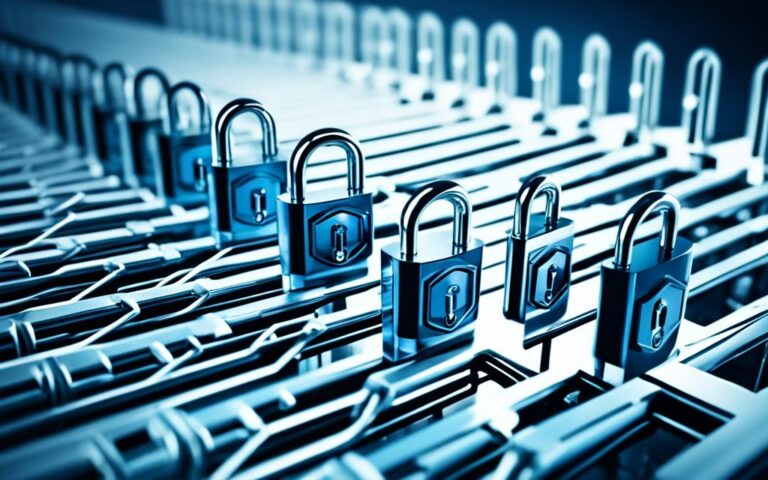Navigating Data Destruction Compliance Challenges
In today’s digital landscape, data compliance is crucial for organizations to protect sensitive information and avoid legal consequences. With data breaches and privacy concerns on the rise, maintaining data destruction compliance is more important than ever. This article will explore the challenges businesses face in meeting UK data destruction compliance standards and provide expert insights on navigating these challenges.
Tips for Maintaining Data Compliance
To maintain data compliance, organizations should institute a comprehensive data disposal and destruction policy. This policy should cover all data formats, involving representatives from various departments to identify vulnerabilities and improvement opportunities. Digitizing records can minimize security and retention liabilities, while utilizing records management software can automate processes and ensure timely document destruction. Seeking expert guidance from a records management consultant can also ensure adherence to regulations and protect against fines and lawsuits.
Data compliance is an essential aspect of modern business operations. With the increasing digital transformation and the growing importance of data lifecycle management, organizations need to develop robust data disposal and destruction policies that meet regulatory requirements. By having a clear policy in place, businesses can minimize the risk of data breaches and protect sensitive information.
“A comprehensive data disposal and destruction policy is crucial for organizations to safeguard against data breaches and maintain compliance with data protection regulations,” says Jane Thompson, a data management expert. “This policy should cover all data formats, including physical documents, electronic files, and even archived data. It’s important to involve representatives from various departments to ensure a holistic approach and identify potential vulnerabilities.”
“Digitizing records can significantly improve security and reduce retention liabilities,” explains Mark Anderson, a records management consultant. “By converting physical documents into digital formats, businesses can enhance the confidentiality of sensitive information and minimize the risk of unauthorized access. Additionally, digitized records can be easily managed, searched, and securely destroyed when necessary.”
Implementing records management software can streamline the data disposal process and ensure compliance with data destruction policies. This software can automate the identification, categorization, and destruction of documents, reducing the manual effort required and ensuring timely disposal according to retention schedules. It also provides audit trails and detailed logs for compliance purposes.
“Records management software is a valuable tool for organizations seeking to enhance data compliance,” suggests Sarah Wilson, a data security specialist. “With features like automated data retention and destruction workflows, organizations can ensure that information is managed in accordance with regulatory requirements. This not only reduces the risk of non-compliance but also improves operational efficiency.”
When implementing a data disposal and destruction policy, seeking expert guidance can provide valuable insights and ensure adherence to regulations. A records management consultant can provide expert advice on best practices, help identify areas for improvement, and assist in developing an effective policy that meets specific business requirements.
“Working with a records management consultant can provide expert guidance, bringing in-depth knowledge of data protection regulations and industry best practices,” advises David Roberts, a compliance specialist. “By leveraging their expertise, organizations can ensure their data disposal and destruction policies align with compliance standards, protecting against fines, lawsuits, and reputational damage.”
Key Tips for Maintaining Data Compliance:
- Institute a comprehensive data disposal and destruction policy.
- Involve representatives from various departments to identify vulnerabilities and improvement opportunities.
- Digitize records to minimize security and retention liabilities.
- Utilize records management software to automate processes and ensure timely document destruction.
- Seek expert guidance from a records management consultant to ensure adherence to regulations.
| Data Compliance | Data Disposal and Destruction Policy | Digital Transformation | Data Lifecycle Management | Expert Guidance |
|---|---|---|---|---|
| Ensuring compliance with data protection regulations. | Establishing a comprehensive policy for data disposal and destruction. | Utilizing technology to enhance data management and security. | Managing data throughout its lifecycle, from creation to destruction. | Seeking expertise and guidance from professionals in the field. |
What to Look for in a Data Destruction Partner
When choosing a data destruction partner, it’s crucial to consider specific factors to ensure the secure disposal of confidential information. Here are key considerations to keep in mind:
- NAID Certification: Look for a vendor that holds NAID certification. This certification sets industry standards for data destruction, ensuring that your partner follows strict protocols to safeguard sensitive data.
- Certificates of Destruction: Ensure that the data destruction partner provides detailed certificates of destruction. These certificates serve as proof that your confidential documents have been disposed of in compliance with federal, state, and industry regulations.
- Federal and State Standards: Verify that the vendor adheres to all federal and state data destruction standards. Compliance with these regulations is essential for protecting your organization from legal consequences.
- Chain of Custody: A data destruction partner should be able to provide a detailed chain of custody for your documents. This ensures that there is a secure and documented record of who handled and destroyed your information, minimizing the risk of breaches.
Choosing a reliable data destruction partner is an important step in maintaining data security and compliance. By considering these factors and conducting thorough due diligence, you can confidently select a partner that meets your organization’s needs.
Compliance and Retention Standards
Adhering to compliance and retention standards is essential for data destruction policies. These standards ensure that organizations meet legal requirements and maintain ethical business practices when managing sensitive information. A key regulation that dictates specific retention periods and handling protocols for personal data is the HIPAA (Health Insurance Portability and Accountability Act).
Compliance is not limited to meeting legal mandates; it also encompasses ethical responsibilities and business integrity. By balancing data protection, privacy, and records retention requirements, organizations can demonstrate their commitment to ethical business practices and build trust with their stakeholders.
“Adhering to compliance and retention standards is not just about avoiding legal consequences. It is about fostering a culture of responsibility, respect, and data ethics within the organization.”
Crafting an effective data destruction policy involves a thorough understanding of the applicable compliance and retention standards. Organizations need to consider various factors, such as the type of data they handle, industry regulations, and legal requirements specific to their jurisdiction. By formulating a comprehensive policy, organizations can mitigate risks, protect sensitive information, and uphold ethical business practices.
The Importance of Compliance and Retention Standards
Compliance and retention standards play a pivotal role in safeguarding data and aligning with legal and ethical requirements. They offer the following benefits:
- Legal Compliance: Ensuring compliance with relevant laws and regulations helps organizations avoid penalties, fines, and lawsuits.
- Data Protection: Adhering to retention standards ensures that data is securely stored and disposed of, reducing the risk of unauthorized access or data breaches.
- Customer Trust: Demonstrating compliance and ethical practices instills confidence in customers, clients, and partners, fostering long-term relationships built on trust.
- Business Continuity: Effective data retention practices enable organizations to retrieve and use relevant data when needed, supporting strategic decision-making and operational efficiency.
Retention Standards in Practice
Retention standards vary depending on the nature of the data and the industry. For example, in the healthcare sector, the HIPAA sets guidelines for how long personal health information should be retained. Other industries, such as finance or legal, may have their own specific regulations.
It is essential for organizations to identify the applicable retention standards and integrate them into their data destruction policies. By referencing these standards, organizations can ensure compliance, manage data effectively, and demonstrate accountability.
| Data Category | Retention Period |
|---|---|
| Financial Records | 7 years |
| Employee Records | 6 years |
| Healthcare Data | 10 years |
| Customer Information | 5 years |
Organizations must stay updated on any changes to compliance and retention standards that impact their operations. Regular reviews and adjustments to data destruction policies ensure that they remain aligned with the ever-evolving regulatory landscape.
In summary, compliance and retention standards are crucial components of an effective data destruction policy. By adhering to these standards and integrating them into their operations, organizations can protect sensitive data, maintain ethical business practices, and uphold their legal obligations.
Tools and Techniques for Effective Data Destruction
Modern data management tools offer a range of capabilities that can greatly enhance the effectiveness of data destruction processes. In this section, we will explore some of these tools and techniques, highlighting their role in aligning with data destruction policies, optimizing costs, and ensuring compliance.
Data Management Tools
Data management tools are essential for implementing and maintaining a robust data destruction policy. These tools provide organizations with the necessary infrastructure to securely manage and dispose of sensitive data. They offer features such as automated data tiering and deletion, which streamline the process and reduce manual intervention. By leveraging these tools, businesses can ensure that data is effectively managed throughout its lifecycle, from creation to disposal, in compliance with legal and business considerations.
Automated Data Tiering
Automated data tiering is a technique that allows organizations to categorize and prioritize data based on its value and access frequency. This process involves automatically moving data between different storage tiers, such as high-performance SSDs and cost-effective HDDs, based on predefined policies. By automatically tiering data, organizations can optimize storage costs and ensure that sensitive data is securely deleted according to retention policies.
Information Lifecycle Management
Information Lifecycle Management (ILM) is an approach that involves managing data throughout its entire lifecycle, from creation to deletion. ILM processes include data classification, retention period determination, and secure deletion. By implementing an ILM strategy, organizations can ensure that data is securely stored, accessed, and ultimately destroyed in compliance with legal and business requirements.
“Effective data destruction requires the right tools and techniques, such as data management tools, automated data tiering, and information lifecycle management. These solutions streamline the process and ensure compliance, while also optimizing costs. It’s crucial to consider legal and business considerations to avoid fines and reputational damage.”
Legal and Business Considerations
When handling data destruction, it’s imperative to consider legal and business requirements. Mishandling data can have severe consequences, including legal penalties and reputational damage. Organizations must ensure compliance with data protection and privacy laws, industry regulations, and internal policies. Additionally, considering the business implications, such as the potential impact on operations and customer trust, is essential for making informed decisions regarding data destruction.
By leveraging data management tools, automated data tiering, and information lifecycle management practices, organizations can streamline data destruction processes while ensuring compliance with legal and business considerations. Taking a proactive approach to data destruction not only protects sensitive information but also contributes to maintaining trust and credibility with customers and stakeholders.
Conclusion
Developing and implementing a robust data destruction policy is crucial for organizations to ensure compliance with industry standards, safeguard data privacy, and enhance overall data security in today’s digital age. By taking a proactive approach and addressing key considerations, businesses can effectively manage costs and align their practices with regulatory requirements.
A vital aspect of crafting a data destruction policy is understanding the specific data being managed. This involves conducting a thorough assessment of data types, sources, and storage locations. By categorizing data based on sensitivity and potential risk, organizations can tailor their destruction methods and prioritize resources accordingly.
Utilizing technology to automate data lifecycle management is another essential step in achieving compliance and reducing human error. By implementing data management tools that enable automated data tiering and deletion, businesses can streamline the process, optimize costs, and ensure consistent adherence to policy guidelines.
Additionally, it is crucial to stay vigilant about legal and compliance updates and make necessary adjustments to the data destruction policy as required. Regular reviews and audits, coupled with thorough documentation of destruction processes, provide organizations with the necessary evidence of compliance and serve as a reference point for future enhancements.
FAQ
What is data destruction compliance?
Data destruction compliance refers to the adherence to regulations and standards for the safe disposal and destruction of sensitive information to protect against data breaches and legal consequences.
Why is data destruction compliance important?
Data destruction compliance is important because it helps organizations protect sensitive information, avoid legal consequences, and maintain data privacy and security in today’s digital landscape.
What should be included in a data disposal and destruction policy?
A comprehensive data disposal and destruction policy should cover all data formats, involve representatives from various departments, and identify vulnerabilities and improvement opportunities to ensure compliance.
How can digitizing records help with data destruction compliance?
Digitizing records can minimize security and retention liabilities, making it easier to manage and destroy data securely and in compliance with regulations.
What role does records management software play in data destruction compliance?
Records management software can automate processes, ensure timely document destruction, and help organizations comply with data destruction regulations by providing a structured approach to records management.
Why is seeking expert guidance important for data destruction compliance?
Seeking expert guidance from a records management consultant can ensure adherence to regulations, protect against fines and lawsuits, and help organizations navigate the complexities of data destruction compliance.
What should I consider when choosing a data destruction partner?
When choosing a data destruction partner, consider factors such as the vendor’s NAID certification, detailed certificates of destruction, adherence to federal and state standards, and the ability to provide a detailed chain of custody.
Why is compliance and retention standards important for data destruction policies?
Compliance and retention standards, such as those dictated by HIPAA, provide specific guidelines for data retention periods and handling protocols, ensuring that organizations meet legal requirements and adhere to ethical business practices.
How can data management tools help with effective data destruction?
Data management tools offer capabilities for automated data tiering and deletion, aligning with data destruction policies through information lifecycle management practices. This streamlines the process, ensures compliance, and optimizes costs.
What are the legal and business considerations of data destruction?
Mishandling data destruction can lead to fines and reputational damage. Therefore, organizations need to consider legal requirements, business practices, and the implications of data destruction to ensure compliance and protect their reputation.













